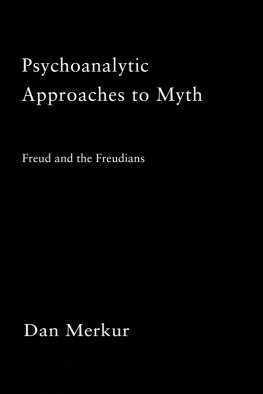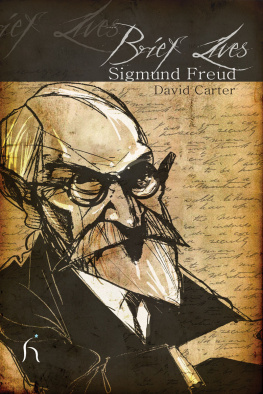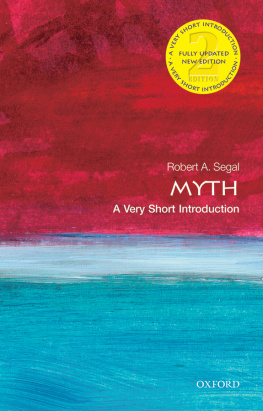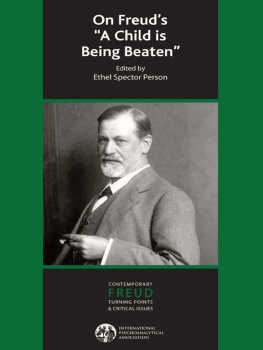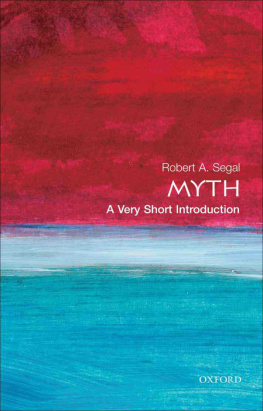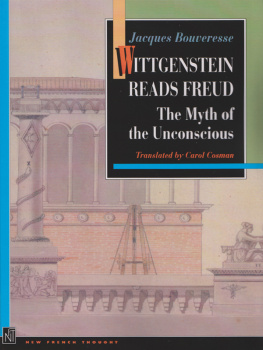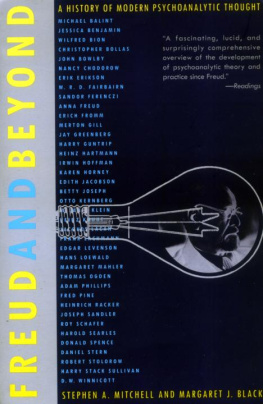Merkur - Psychoanalytic Approaches to Myth: Freud and the Freudians
Here you can read online Merkur - Psychoanalytic Approaches to Myth: Freud and the Freudians full text of the book (entire story) in english for free. Download pdf and epub, get meaning, cover and reviews about this ebook. year: 2005, publisher: Taylor & Francis (CAM), genre: Religion. Description of the work, (preface) as well as reviews are available. Best literature library LitArk.com created for fans of good reading and offers a wide selection of genres:
Romance novel
Science fiction
Adventure
Detective
Science
History
Home and family
Prose
Art
Politics
Computer
Non-fiction
Religion
Business
Children
Humor
Choose a favorite category and find really read worthwhile books. Enjoy immersion in the world of imagination, feel the emotions of the characters or learn something new for yourself, make an fascinating discovery.
Psychoanalytic Approaches to Myth: Freud and the Freudians: summary, description and annotation
We offer to read an annotation, description, summary or preface (depends on what the author of the book "Psychoanalytic Approaches to Myth: Freud and the Freudians" wrote himself). If you haven't found the necessary information about the book — write in the comments, we will try to find it.
Merkur: author's other books
Who wrote Psychoanalytic Approaches to Myth: Freud and the Freudians? Find out the surname, the name of the author of the book and a list of all author's works by series.
Psychoanalytic Approaches to Myth: Freud and the Freudians — read online for free the complete book (whole text) full work
Below is the text of the book, divided by pages. System saving the place of the last page read, allows you to conveniently read the book "Psychoanalytic Approaches to Myth: Freud and the Freudians" online for free, without having to search again every time where you left off. Put a bookmark, and you can go to the page where you finished reading at any time.
Font size:
Interval:
Bookmark:
Psychoanalytic Approaches to Myth
T HEORISTS OF M YTH
Robert A. Segal, Series Editor
K ENNETH B URKE ON M YTH:
An Introduction
by Lawrence Coupe
J UNG AND THE J UNGIANS ON M YTH:
An Introduction
by Steven F.Walker
R ENE G IRARD AND M YTH:
An Introduction
by Richard J. Golsan
T HE M YTH AND R ITUAL S CHOOL:
J. G. Frazer and the Cambridge Ritualists
by Robert Ackerman
P OLITICAL M YTH:
A Theoretical Introduction
by Christopher G. Flood
C ASSIRER AND L ANGER ON M YTH:
An Introduction
by William Schultz
M YTH AND R ELIGION IN M IRCEA E LIADE
by Douglas Allen
N ORTHROP F RYE ON M YTH
by Ford Russell
T HE P OETICS OF M YTH
by Eleazer M. Meletinsky
Psychoanalytic Approaches to Myth
Freud and the Freudians
Dan Merkur

Published in 2005 by
Routledge
270 Madison Avenue
New York, NY 10016
Published in Great Britain by
Routledge
2 Park Square
Milton Park, Abingdon
Oxon OX1 4RN UK
Copyright 2005 by Dan Merkur.
Routledge is an imprint of the Taylor & Francis Group.
This edition published in the Taylor & Francis e-Library, 2005.
To purchase your own copy of this or any of Taylor & Francis or Routledges collection of thousands of eBooks please go to www.eBookstore.tandf.co.uk.
All rights reserved. No part of this book may be reprinted or reproduced or utilized in any form or by any electronic, mechanical, or other means, now known or hereafter invented, including photocopying and recording, or in any information storage or retrieval system, without permission in writing from the publishers.
Catalog record is available from the Library of Congress
ISBN 0-203-99724-7 Master e-book ISBN
ISBN: 0-82405-936-0 (hb: alk. paper)
Series Editors Foreword
In the nineteenth century the model for myth was science. Nineteenth century theorists, of whom E. B. Tylor and J. G. Frazer are the clearest examples, saw myth as the primitive counterpart to science, which was assumed to be exclusively modern. Myth, it was assumed, was about the physical world and functioned either to explain events in the world or to control them. In the twentieth century, myth has been regarded as almost anything but a counterpart to science. The subject matter of myth has been taken to be human beings, individually or collectively, and the function of myth has been taken to be other, or at least more, than explanatory.
The psychoanalytic study of myth, beginning with Freuds analysis of the story of Oedipus in The Interpretation of Dreams (1900), evinces this twentieth-century shift. In psychoanalysis here Jungian psychology as well as Freudian the model for myth is not science but dream. Initially, the aim was to show how close to dream myth is. How myth came to be seen as distinct from dream is one of the ways in which Dan Merkur charts the development of the psychoanalytic study of myth.
Merkur brings unusually varied expertise to his task. He is professionally trained in folklore, religious studies, and psychoanalysis. His wide-ranging expertise is conspicuously demonstrated in the work at hand.
Merkur starts with Freud but then traces the course of the psychoanalytic approach to myth through its many permutations. He considers all of the main figures in the movement who have focused on myth: Abraham, Rank, Rheim, Kardiner, Kluckhohn, Arlow, Devereux, Boyer, and Dundes. He devotes much attention to the neglected Herbert Silberer, who, like other early psychoanalysts, paid the ultimate price for originality: ostracism. Not all of the figures whom Merkur considers were or are psychoanalysts by profession. Some were or are anthropologists or folklorists, and some of the psychoanalysts also had anthropological or folkloristic expertise. It is because of Merkurs breadth that he is able to enlist figures beyond the camp of psychoanalysis proper.
It is also because of Merkurs breadth that he is able to assess the figures the way he does. He ventures outside psychoanalysis to invoke the strictures of folklore. He stresses the necessity of placing myths in their cultural context, thereby attending to distinctively local meanings, origins, and functions as well as to universal ones. Likewise he imports the focus the fixation! of theorists from religious studies (such as Mircea Eliade) on the distinctively religious nature of myths. The subject matter of myth is thereby widened from the unconscious to consciousness, and from consciousness of oneself to consciousness of the world around one though not primarily, as in the nineteenth century, to consciousness of the physical world.
Merkur begins to work out his own theory of myth, one that, following Silberer, makes metaphor central to the enterprise. The centrality of metaphor, or more broadly, of symbolism to deciphering myth has been emphasized by the philosophers Paul Ricoeur and Philip Wheelwright and by the literary critic Kenneth Burke, although none of the three tries to link this conscious or manifest side of myth to its unconscious latent side, as Merk does. For Merkur myth becomes much more than, but not thereby other than, dream-like.
Merkur uses myths from Native North Americans, his ethnographic bailiwick, at once to illustrate and to test the universal claims of psychoanalytic theorists. He continually seeks to show not that the theorists are wrong in what they say about myth but that there is so much more to be said. He observes that especially early psychoanalysts as much used actual myths to confirm psychoanalytic theory as they used the theory to unpack the myths. Like other theorists, Merkur himself tends to use his examples reciprocally, but is always aware of the dual uses.
Merkur chose Psychoanalytic Approaches to Myth rather than Freud and the Freudians on Myth as the main title of his book to reflect contemporary usage among psychoanalysts, who, for all their indebtedness to the master, view the field as one that has advanced far beyond the purview of its founder. Still, Merkurs book takes its place beside Steven Walkers Jung and the Jungians on Myth and makes a wonderfully comprehensive and creative addition to the Theorists of Myth Series.
Robert A. Segal
University of Lancaster, United Kingdom
Preface
In this volume, I have surveyed and evaluated the methods that Freud and the various psychoanalytic schools have employed in their studies of myths. Consistent with my interdisciplinary perspective in the history of religions and clinical psychoanalysis, I am interested in the nature of myth. My chapters discuss: (1) Freuds use of myths as inspirations for his theories; (2) the classical view of myth as a manifestation of the unconscious, a pathological flight from reality; (3) Gza Rheims reconciliation of classical psychoanalysis with the cultural relativism of anthropology; (4) the ego psychological view of myth as a culturally shared defense mechanism; (5) Herbert Silberers under-standing of myth as metaphor; and (6) Oskar Pfisters recognition that some myths are insightful and potentially therapeutic. Within psychoanalysis, myth is, or can be, everything from a pathological symptom to a vehicle of healing. In all cases, myths are symbolic, and their symbols have unconscious meanings and resonances.
My criteria for regarding a school within psychotherapy as psychoanalytic are nominal, rather than essentialist. My discussion is limited to the several schools that descend from Freud, claim his heritage, and are conventionally recognized within the profession as psychoanalytic. With notable exceptions, however, I have chiefly discussed older contributions. Although I assembled, studied, and considered discussing all manners of recent contributions, I found that they generally did not contribute to the study that I was making. On the other hand, two early and long-forgotten contributions, by Silberer and Pfister, have warranted rehabilitation in perspective of recent work in other areas metaphor theory and play therapy, respectively.
Next pageFont size:
Interval:
Bookmark:
Similar books «Psychoanalytic Approaches to Myth: Freud and the Freudians»
Look at similar books to Psychoanalytic Approaches to Myth: Freud and the Freudians. We have selected literature similar in name and meaning in the hope of providing readers with more options to find new, interesting, not yet read works.
Discussion, reviews of the book Psychoanalytic Approaches to Myth: Freud and the Freudians and just readers' own opinions. Leave your comments, write what you think about the work, its meaning or the main characters. Specify what exactly you liked and what you didn't like, and why you think so.

